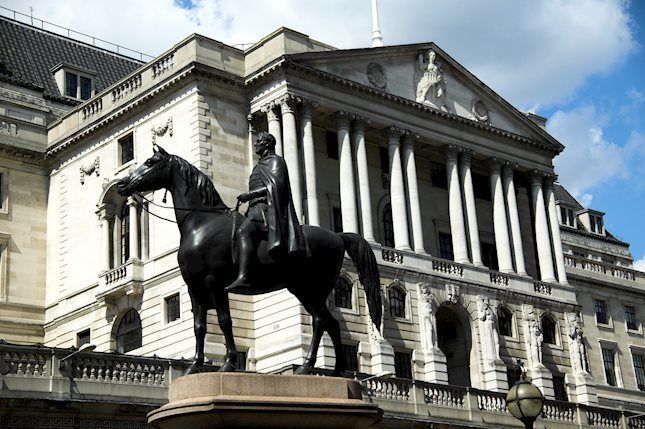The European Central Bank (ECB) Governing Council member Yannis Stournaras said on Wednesday that the Eurozone is on the cusp of sustainably reaching 2% inflation, putting the onus on officials to avoid undershooting that goal, per Bloomberg.
Key quotes
“Inflation is now more likely to converge sustainably to the target sooner than earlier expectations — by the beginning of 2025 instead of the last quarter, as was anticipated in the most recent ECB projections.”
“Our policy focus may have to increasingly take account of economic conditions so that we don’t undershoot our inflation objective.”
“Although we have not had any indications of a hard landing, the markets are extremely sensitive to disappointing growth readings.”
“If negative surprises for growth come in and we fail to unwind our restrictive monetary-policy stance at the appropriate pace, unnecessary market turbulence could be induced, negatively impacting economic and financial stability.”
“The September reading of inflation at 1.7 percent should be viewed as both a success and a wake-up call.”
“A policy-rate path that remains too restrictive for too long could induce an undershooting of our inflation target over the medium term and impede growth. Should that occur, we would risk damaging our credibility.”
“An escalation in trade tensions between major economies through tariffs and retaliation could create chaos in international trade and weigh on confidence and economic activity at the global level.”
Market reaction
At the time of writing, EUR/USD is trading 0.04% higher on the day to trade at 1.0545.
ECB FAQs
The European Central Bank (ECB) in Frankfurt, Germany, is the reserve bank for the Eurozone. The ECB sets interest rates and manages monetary policy for the region. The ECB primary mandate is to maintain price stability, which means keeping inflation at around 2%. Its primary tool for achieving this is by raising or lowering interest rates. Relatively high interest rates will usually result in a stronger Euro and vice versa. The ECB Governing Council makes monetary policy decisions at meetings held eight times a year. Decisions are made by heads of the Eurozone national banks and six permanent members, including the President of the ECB, Christine Lagarde.
In extreme situations, the European Central Bank can enact a policy tool called Quantitative Easing. QE is the process by which the ECB prints Euros and uses them to buy assets – usually government or corporate bonds – from banks and other financial institutions. QE usually results in a weaker Euro. QE is a last resort when simply lowering interest rates is unlikely to achieve the objective of price stability. The ECB used it during the Great Financial Crisis in 2009-11, in 2015 when inflation remained stubbornly low, as well as during the covid pandemic.
Quantitative tightening (QT) is the reverse of QE. It is undertaken after QE when an economic recovery is underway and inflation starts rising. Whilst in QE the European Central Bank (ECB) purchases government and corporate bonds from financial institutions to provide them with liquidity, in QT the ECB stops buying more bonds, and stops reinvesting the principal maturing on the bonds it already holds. It is usually positive (or bullish) for the Euro.
Information on these pages contains forward-looking statements that involve risks and uncertainties. Markets and instruments profiled on this page are for informational purposes only and should not in any way come across as a recommendation to buy or sell in these assets. You should do your own thorough research before making any investment decisions. FXStreet does not in any way guarantee that this information is free from mistakes, errors, or material misstatements. It also does not guarantee that this information is of a timely nature. Investing in Open Markets involves a great deal of risk, including the loss of all or a portion of your investment, as well as emotional distress. All risks, losses and costs associated with investing, including total loss of principal, are your responsibility. The views and opinions expressed in this article are those of the authors and do not necessarily reflect the official policy or position of FXStreet nor its advertisers. The author will not be held responsible for information that is found at the end of links posted on this page.
If not otherwise explicitly mentioned in the body of the article, at the time of writing, the author has no position in any stock mentioned in this article and no business relationship with any company mentioned. The author has not received compensation for writing this article, other than from FXStreet.
FXStreet and the author do not provide personalized recommendations. The author makes no representations as to the accuracy, completeness, or suitability of this information. FXStreet and the author will not be liable for any errors, omissions or any losses, injuries or damages arising from this information and its display or use. Errors and omissions excepted.
The author and FXStreet are not registered investment advisors and nothing in this article is intended to be investment advice.
Recommended content
Editors’ Picks

EUR/USD struggles near 1.0550 amid dour mood
EUR/USD struggles near 1.0550 in the European morning on Thursday. The pair faces headwinds from risk-off flows due to rising geopolitical conflict between Russia and Ukraine and worries over the potential US tariffs on the EU. ECB- and Fedspeak are awaited.

GBP/USD trades around 1.2650, upside potential seems limited
GBP/USD keeps its range near 1.2650 in early European trading on Thursday. The pair's sidetrend could be attributed to the softer US Dollar and a risk-aversion market environment. Traders stay cautious amid rife geopolitical tensions and a light economic calendar. Fedspeak eyed.

Gold price retains its bullish bias near one-week high amid rising geopolitical risks
Gold price maintains its bid tone heading into the European session and currently trades around the $2,660 level, or a one-and-half-week high touched earlier this Thursday. This marks the fourth straight day of a positive move and is sponsored by geopolitical risks stemming from the worsening Russia-Ukraine war.

Shiba Inu holders withdraw 1.67 trillion SHIB tokens from exchange
Shiba Inu (SHIB) trades slightly higher, around $0.000024, on Thursday after declining more than 5% the previous week. SHIB’s on-chain metrics project a bullish outlook as holders accumulate recent dips, and dormant wallets are on the move, all pointing to a recovery in the cards.

Sticky UK services inflation to keep BoE cutting gradually
Services inflation is set to bounce around 5% into the winter, while headline CPI could get close to 3% in January. That reduces the chance of a rate cut in December, but in the spring, we think there is still a good chance the Bank of England will accelerate its easing cycle.

Best Forex Brokers with Low Spreads
VERIFIED Low spreads are crucial for reducing trading costs. Explore top Forex brokers offering competitive spreads and high leverage. Compare options for EUR/USD, GBP/USD, USD/JPY, and Gold.